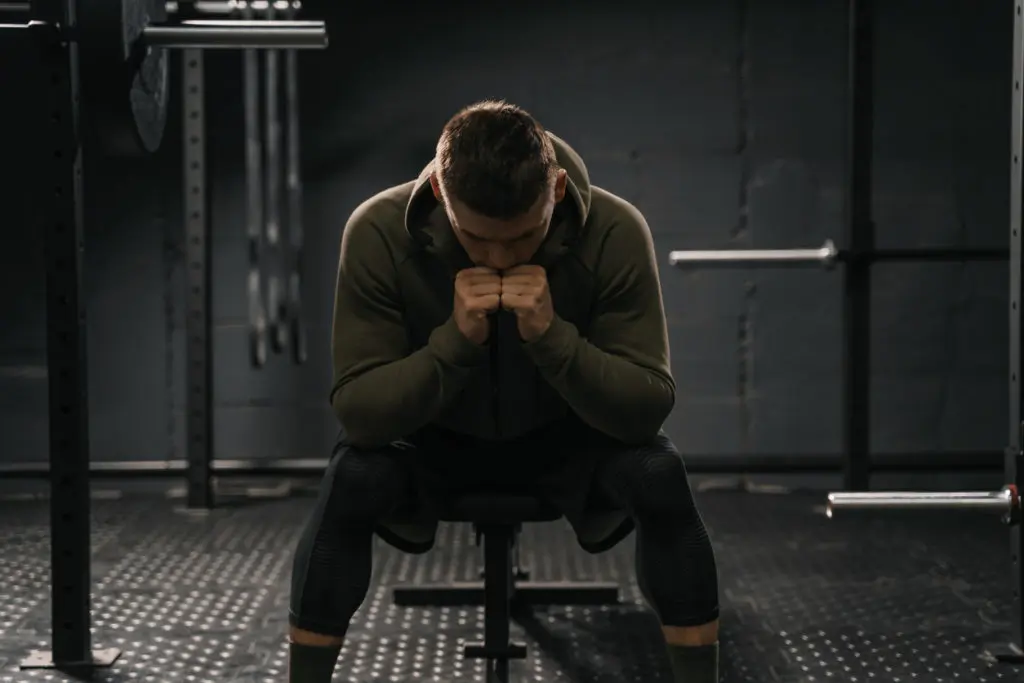Achieving a well-defined set of abs is a goal that many fitness enthusiasts strive for, but it’s often a challenging journey. While aesthetic goals are common, strong abs do more than just look good—they play a critical role in improving your posture, enhancing balance, and supporting the spine, reducing your risk of injury. But how do you get there? Is it endless crunches or starving yourself on extreme diets?
In this article, we’ll break down the most effective tips for an abs workout that will not only help you achieve the six-pack you desire but also strengthen your core and overall body. Whether you’re a beginner or have been on this journey for a while, these seven tips will elevate your training and set you up for long-term success.
1. Understand the Anatomy of Your Abs
Before diving into specific exercises, it’s crucial to understand the muscles you’re working with. The “abs” refer to a group of muscles, primarily consisting of:
- Rectus Abdominis: This is the muscle most associated with the “six-pack” look. It runs vertically down the front of your abdomen.
- Obliques: These muscles run along the sides of your abdomen. You have external obliques (closer to the surface) and internal obliques (deeper muscles). They help with twisting and side-bending motions.
- Transverse Abdominis: Often overlooked, this is the deepest muscle layer that wraps around your sides and spine, acting as a stabilizer for your core.
Understanding these muscles is key because an effective workout routine will target all of them, not just the rectus abdominis (which is typically the focus of most ab routines). Neglecting any part of your core can lead to muscle imbalances, poor posture, and potential injuries down the road.
2. Don’t Rely on Crunches Alone
Crunches might be one of the most well-known exercises for abs, but relying on them alone won’t get you the results you want. Crunches primarily target the rectus abdominis, but your core is much more than just one muscle.
Here’s why you should diversify your ab workout:
- Limited Range of Motion: Crunches work in a limited range of motion, and while they activate the upper part of your rectus abdominis, they don’t engage the entire core.
- Risk of Neck and Back Strain: Many people perform crunches incorrectly, using their neck or lower back to do the work, which can lead to pain and injury.
- Missed Potential: By focusing solely on crunches, you’re missing out on strengthening the obliques, transverse abdominis, and even lower back, all of which are crucial for overall core stability.
Better Alternatives to Crunches:
- Planks: One of the best isometric exercises for your entire core, planks engage your rectus abdominis, obliques, and transverse abdominis.
- Leg Raises: A great exercise for targeting the lower abs and improving hip flexibility.
- Russian Twists: This exercise engages your obliques, helping to carve out definition along the sides of your torso.
The key is to mix up your routine with dynamic movements that challenge your entire core, not just your upper abs.
3. Focus on Core Stability Over Aesthetics
The number one mistake people make when training abs is focusing solely on the aesthetics (i.e., trying to get a six-pack) rather than developing core stability. A strong core isn’t just about how your abs look—it’s about how they function.
Your core plays a major role in almost every movement you make, from walking and sitting to lifting weights and running. A stable core can prevent injuries, improve your performance in sports, and make everyday tasks easier.
Exercises to Improve Core Stability:
- Dead Bug: This is an excellent exercise for targeting the transverse abdominis and stabilizing the spine.
- Bird-Dog: This exercise helps to engage the lower back, glutes, and core muscles simultaneously, teaching your body how to stabilize itself during dynamic movements.
- Hollow Body Hold: This is a static hold that requires you to engage your entire core and maintain tension for a prolonged period. It’s great for building endurance and core strength.
Incorporating exercises that promote core stability will also translate into better performance in other areas of fitness, whether it’s lifting, running, or playing sports.
4. Incorporate Compound Movements
Abs workouts don’t have to be isolated to crunches and sit-ups. Some of the most effective exercises for your core are compound movements that engage multiple muscle groups at once. These exercises not only save time but also ensure that your core is working in conjunction with the rest of your body.
Best Compound Movements for Abs:
- Deadlifts: While deadlifts are primarily a lower body and back exercise, they require significant core engagement to stabilize the spine and control the movement. Engaging your core during deadlifts can help improve overall strength and protect your lower back.
- Squats: Like deadlifts, squats require core stability to maintain proper form. The deeper you squat, the more your core works to stabilize your body and keep your torso upright.
- Overhead Press: Pressing a weight overhead forces your core to engage to keep your balance and stabilize your torso, making this an excellent compound movement for core strength.
By incorporating these exercises into your routine, you’ll activate your abs without having to do endless crunches or planks. Plus, compound movements will help you build total-body strength, burn fat, and increase muscle definition overall.
5. Don’t Forget About Diet
You’ve probably heard the phrase, “Abs are made in the kitchen,” and it’s true. You can work out your abs every day, but if your diet isn’t in check, your hard work won’t show. To see your abs, you need to reduce body fat, which is largely controlled by your nutrition.
Here’s how to optimize your diet for fat loss and visible abs:
- Caloric Deficit: To lose fat, you need to be in a caloric deficit, meaning you consume fewer calories than you burn. Track your intake to ensure you’re eating the right amount for your goals.
- Prioritize Protein: Protein is essential for muscle repair and growth, and it also helps you feel full, which can make sticking to a caloric deficit easier. Aim for at least 0.7-1g of protein per pound of body weight.
- Avoid Empty Calories: Processed foods, sugary drinks, and refined carbs can add unnecessary calories without providing any nutritional benefit. Focus on whole, nutrient-dense foods like lean meats, vegetables, fruits, and healthy fats.
While you don’t need to be on an extreme diet to get abs, focusing on a balanced, nutrient-rich diet will support your workouts and help reveal the muscle definition underneath.
6. Use Progressive Overload for Abs
Just like any other muscle group, your abs need to be challenged to grow stronger and more defined. Many people fall into the trap of doing hundreds of reps of bodyweight exercises without ever increasing the difficulty.
Progressive overload is the principle of gradually increasing the difficulty of your workouts to continue making gains. This can be applied to abs training by increasing resistance, reps, or time under tension.
Ways to Apply Progressive Overload:
- Increase Resistance: Start incorporating weights into your ab exercises. You can hold a dumbbell or a plate while doing Russian twists, or add ankle weights for leg raises.
- Increase Reps or Time: If you’re doing planks or hollow body holds, increase the amount of time you hold the position each week. For dynamic exercises like crunches or mountain climbers, try adding more reps as you get stronger.
- Try Advanced Movements: Once you’ve mastered basic exercises like planks and leg raises, start incorporating more advanced moves, such as dragon flags, hanging leg raises, or L-sit holds.
The goal is to keep your abs challenged so they continue to grow stronger and more defined. If you’re still doing the same ab routine you were six months ago, it’s time to switch it up and introduce progressive overload.
7. Train Abs Like Any Other Muscle Group
Many people treat abs differently than other muscle groups, thinking that they need to work them every day to see results. This isn’t the case. Your abs are just like any other muscle, and they need time to recover in between workouts.
Overtraining your abs can lead to muscle fatigue, poor form, and even injury. Instead of training your abs every day, aim to work them 2-3 times per week, with a focus on intensity and variety.
Sample Weekly Abs Routine:
- Day 1: Core Stability
- Plank (3 sets, 45 seconds hold)
- Dead Bug (3 sets, 10 reps per side)
- Bird-Dog (3 sets, 10 reps per side)
- Day 2: Strength & Resistance
- Weighted Russian Twists (3 sets, 15 reps per side)
- Leg Raises (3 sets, 12-15 reps)
- Hollow Body Hold (3 sets, 30-45 seconds hold)
- Day 3: Compound Movements & Functional Core
- Deadlifts (4 sets, 8 reps)
- Squats (4 sets, 10 reps)
- Overhead Press (4 sets, 8 reps)
By training your abs with intensity and giving them time to recover, you’ll build stronger, more defined muscles. Just like any other muscle group, abs need rest to repair and grow, so don’t be afraid to take rest days in between your core-focused sessions.
Conclusion
Training your abs effectively is about more than just doing crunches and hoping for a six-pack. By focusing on all aspects of your core, incorporating compound movements, and ensuring your diet is in check, you’ll not only achieve the aesthetic goals you’re aiming for but also build a stronger, more functional core.
Remember to train smart, mix up your exercises, and be patient—visible abs take time, but with consistency and the right approach, you’ll start seeing the results you’re after. So, what are you waiting for? It’s time to crush your next abs workout!
Recent studies have shown that incorporating high-intensity interval training (HIIT) into your routine can significantly enhance core strength and definition. HIIT workouts, which alternate between short bursts of intense activity and rest periods, can increase calorie burn and improve cardiovascular health, making them an effective addition to traditional ab workouts. Additionally, advancements in wearable fitness technology now allow for more precise tracking of core engagement and overall workout effectiveness, helping individuals tailor their routines for optimal results.















One Comment